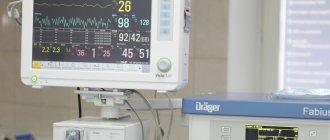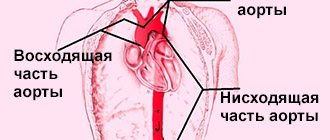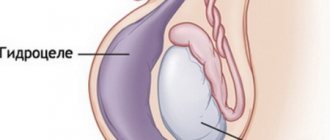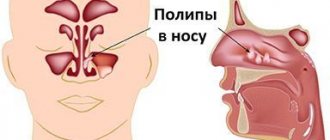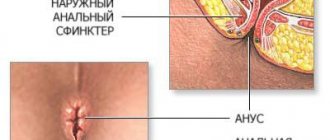Coronary artery bypass grafting is a surgical procedure used to treat severe coronary heart disease. During surgery, the surgeon creates a new path for blood flow to the heart muscle, bypassing the blocked coronary artery. By improving the blood supply to the myocardium, the patient gets rid of the symptoms of angina pectoris and his general condition improves. Coronary artery bypass grafting helps prevent recurrent heart attacks and prolong the patient’s life.
Heart surgery is a major surgical procedure. Currently, there are minimally invasive technologies that help to significantly reduce risks and shorten the recovery period. Some patients, for one reason or another, still have to be operated on openly, through a large incision. Many patients from Russia prefer to be treated in foreign clinics, where leading cardiac surgeons work and the most modern technologies are used.
Mednavi specialists will help you find a suitable clinic abroad and get treatment from the best doctors. Contact us
Indications
CABG is an operation that is primarily required for patients with severe angina that is resistant to drug therapy. In addition, surgical treatment may be recommended in the absence of symptoms. There is silent myocardial ischemia, which is no less dangerous. It is not felt by the patient, but can be diagnosed using ECG and Holter monitoring.
Indications for CABG can also be determined using coronary angiography. This is an x-ray test in which contrast is injected into the arteries of the heart. The main cause of mortality from coronary disease is atherosclerosis and disruption of the integrity of the atherosclerotic plaque. The blood vessel is torn, and a blood clot forms at the site of damage. It clogs the coronary artery, resulting in myocardial infarction.
Coronary angiography allows you to identify large obstacles to blood flow (atherosclerotic plaques) and assess the risk of acute cardiovascular events. A high degree of coronary artery disease requires cardiac CABG.
Based on the results of coronary angiography, the main indications for CABG are:
- Narrowing of the lumen of any coronary artery by 75% or more
- Reduction in the lumen of the left coronary artery trunk by 50% or more
The location of stenosis (impaired patency) of the coronary arteries is also assessed. The more proximal it is (closer to the heart), the worse the blood supply to the myocardium. CABG surgery on the heart will be most successful if normal blood circulation is observed beyond the narrowing.
Surgical results and prognosis
Despite the steady increase in the number of older and high-risk patients, morbidity and mortality after bypass surgery remain low, and long-term results of the operation are excellent.
CABG does not prevent progression of native CAD. However, both the progression of the underlying disease and the development of vein graft failure can be slowed with drug therapy. The European Heart Association recommends lifelong antiplatelet therapy. Daily intake of low dose aspirin (81 mg) may be preferable to minimize the risk of bleeding. Beta blockers should be used in patients with recent myocardial infarction, left ventricular systolic dysfunction, or in patients with non-revascularized CAD.
All patients, regardless of their lipid profile, should receive lifelong high-intensity statin therapy.
Contraindications
Coronary artery bypass grafting (CABG) may not be performed on patients even if there are indications for surgery. This may be due to the presence of contraindications. These are diseases and conditions of the body that make surgery too dangerous or unsuccessful.
Main contraindications for cardiac CABG:
- Reduced left ventricular ejection fraction by up to 30%
- Congestive heart failure
- Impaired blood flow in all coronary arteries
- Severe concomitant diseases
In case of circulatory disorders in all coronary arteries, preference is given to laser myocardial revascularization or cell therapy.
How is the operation performed?
The operation can be performed using a heart-lung machine. In addition, in developed countries, including Germany, off-pump CABG is increasingly being used.
The essence of surgery is to create a bypass path for blood flow. For this purpose, shunts are created - additional vessels that leave the aorta and flow into the coronary arteries - beyond the level of narrowing. A person’s own veins or arteries are used as prostheses. This may be the great saphenous vein or the radial artery.
Usually 3 bypasses are created - for the largest coronary arteries:
- Anterior interventricular
- Envelope
- Right
In 20% of patients, 4-8 anastomoses are installed. More preferable is CABG (coronary artery bypass grafting) on a beating heart.
The advantages are as follows:
- Blood cells are not damaged
- Rehabilitation after CABG is faster
- The operation has a shorter duration
In this case, complications after CABG on the heart are less common. Because there is no risk from those that are directly related to the use of a heart-lung machine. This is pulmonary edema, embolic damage to the blood vessels of the brain or kidneys, hypoxia (oxygen starvation) of internal organs.
Minimally invasive coronary artery bypass grafting
There are three types of minimally invasive options for cardiac bypass surgery.
- Endoscopic surgery (MIDCAB). It is performed on a beating heart. Several small incisions are made in the intercostal spaces, into which an endoscopic instrument is inserted. This operation is used when it is necessary to bypass only one coronary artery. The most commonly used technique is mammocoronary bypass grafting.
- Ministerotomy. This option involves a short incision on the sternum measuring 5-7 cm (usually 13-15 cm). As a result, the recovery period and the intensity of postoperative pain are reduced.
- Robotic technology (TECAB). This technique takes advantage of endoscopic minimally invasive surgery and the precision of robotic surgery. The operation is carried out by obtaining a graft from the left mammary artery using a surgical robot and then installing a shunt from the resulting piece of artery to the beating heart through a small incision of 4-5 cm without cutting the rib.
Statistics show very encouraging results from this approach. 95% of shunts placed in this manner remain patent at 92-97% for 8 years.
Recovery after coronary artery bypass surgery
Immediately after surgery, the patient is on artificial ventilation for a certain time. And after natural breathing is restored, prevention of congestion is required. To do this, the patient is asked to inflate rubber balls several dozen times a day. As a result, the lungs expand.
Recovery from open-heart CABG involves caring for the surgical wound. The incision is made down the middle of the sternum. In addition, there is damage to the lower extremities - where the doctor took the material for bypass (the great saphenous vein). Skin wounds heal in 1-2 weeks. After this, the person is allowed to wash in the shower.
Banding after CABG is not mandatory, but is preferred to reduce the risk of sternal suture dehiscence. While skin heals in an average of 10 days, bone heals over several months. Patients often ask how long to wear a bandage after CABG. It is usually used for 4-6 months.
There should be no arrhythmia after CABG. If it occurs, it is not a consequence of the operation. There are a large number of arrhythmias. Some may be caused by myocardial ischemia, others by independent pathologies, and still others by previous myocardial infarction. Typically, the heart rhythm normalizes after surgery due to improved blood supply to the heart muscle.
The consequences of CABG surgery are assessed 2-3 months after it is performed. By this time, angina should no longer bother the patient. The person is given a stress test and IVF is removed to understand how much the blood supply to the myocardium has improved. If there is no pain after CABG during physical activity, the operation is considered successful.
Recovery after CABG can be carried out in a clinic, in a sanatorium or at home. Naturally, the most successful rehabilitation will be under the guidance of a specialist. But some patients undergo rehabilitation after CABG at home, which is usually associated with a desire to save money. If there is no money for quality restoration, you need to take care of yourself. Exercise after CABG surgery is very important. You need to start with walking - at least 1 kilometer a day. Then - gradually increase the load.
Patients often ask when they can sleep on their side after CABG. You can lie on your side almost immediately, if that’s comfortable for you. Most doctors do not prohibit this from happening to their patients, since sleeping on the side does not affect the results of the operation.
Send a request for treatment
What to expect after coronary artery bypass surgery?
Much depends on how successfully the operation was performed, but the rehabilitation period also greatly influences the outcome of treatment. Its total duration is about a month, and during this time the patient must conscientiously follow the doctor's recommendations.
For a week after the operation, the patient must remain in the hospital under the supervision of a doctor.
The wound heals within 2–3 weeks. After open surgery, you need to wear a special bandage; it will help prevent sutures from splitting and becoming infected.
After a month, the patient can return to normal life. You can go about your daily activities, drive a car, have sex. But intense physical activity is still contraindicated. It is recommended to undergo a course of rehabilitation treatment in a sanatorium.
After 4 months, the bones of the chest are completely fused. The doctor prescribes a follow-up examination, ECG, and ultrasound of the heart to assess the effectiveness of treatment.
Life after CABG on the heart
After CABG, a person’s life changes only for the better. Full recovery takes about 6 months. During this time, the sternum grows together and tolerance to physical activity increases. Disability after CABG is not issued. Moreover, disability after CABG can be removed if you become able-bodied again. And if the operation is successful and there is no concomitant pathology, this will happen.
Several important questions that patients often ask regarding lifestyle after surgery:
- Showering - allowed 10 days after surgery (plus or minus 2 days) if the skin wound has healed
- A bath after cardiac CABG is allowed after 2-3 months, when you undergo a follow-up examination (because temperature changes can provoke spasm of the coronary arteries and an attack of angina)
- Alcohol after CABG is allowed in moderation after the early postoperative recovery period
- Smoking is prohibited because it leads to narrowing of the coronary vessels and increases the risk of atherosclerotic damage.
- Gymnastics after CABG - carried out under the guidance of a specialist in physical therapy, required to strengthen the heart muscle and improve tolerance to physical activity
- Diet after coronary artery bypass grafting is desirable, but not mandatory (you can reduce the consumption of animal fats to reduce the risk of atherosclerotic plaques in places where they do not yet exist)
Having surgery does not guarantee that you will not have angina or myocardial infarction in the future. Because CABG only allows you to bypass narrowed areas of blood vessels. But after a few years, new atherosclerotic plaques may appear. Therefore, it is important to adhere to a healthy lifestyle and take medications prescribed by your doctor.
Postoperative complications
Complications after surgery can develop both from the cardiovascular system and from other organs and systems. The latter, as a rule, depend on the patient’s age and the presence of chronic diseases. These include: decompensation of diabetes mellitus, exacerbation of bronchial asthma, stroke and so on. Heart failure, acute myocardial infarction and myocardial necrosis are postoperative consequences of the heart. If you are interested in the question of how long they live after surgery, then the answer will be ambiguous. The length of life after surgery depends on many factors - the age of the patient, the presence of chronic diseases, lifestyle after surgery, and so on.
At the appointment, the cardiologist will tell you how to avoid complications and what disability group the patient will receive after bypass surgery.
Where is the best place to do CABG?
Coronary artery bypass surgery is performed all over the world. Many residents of the CIS undergo CABG in Moscow. Often, residents of developing countries seek to travel abroad for surgery. Because it is very dangerous and requires a long recovery. A better-quality operation provides better treatment results and a less painful rehabilitation period.
Residents of many countries go to the States for CABG surgery. The medicine there is really high quality, but very expensive. It is cheaper to do CABG in Israel. We recommend Germany. This is the “golden mean” - German clinics are able to provide the same high quality of medical services as the United States, but it is easier to come here for treatment, and the services of doctors are cheaper.
The main advantages of coronary artery bypass surgery in Germany:
- Surgery is performed on a beating heart if possible given the clinical situation
- The best doctors work in Germany - they come here from all over the world to practice medicine. And when performing CABG, the qualifications of the cardiac surgeon play a significant role
- German clinics are equipped with the latest technology
- After the operation, the person is provided with high-quality care and medicinal support, which improves the tolerability of the early postoperative period
- The opportunity to undergo high-quality rehabilitation, which will return a person to his former lifestyle and restore his ability to work
Safe and effective aortic surgery can be performed at the Helios Klinik Krefeld, a medical center of maximum care, continuously collaborating with leading universities and research centers around the world. The Department of Adult and Pediatric Cardiac Surgery, under the direction of Prof. Dr. med. Jürgen Ennker, has a number of its own developments in the field of surgical interventions on the thoracic and abdominal aorta. These are coronary artery bypass grafting using minimal extracorporeal circulation (a special heart-lung machine is used), coronary artery bypass grafting on a beating heart, and minimally invasive direct coronary artery bypass grafting. The department also uses hybrid endoprostheses of the thoracic and abdominal aorta, and performs classical reconstructive interventions with the installation of self-expanding stents. At the same time, the department’s specialists perform both primary and more complex revision interventions on patients of all ages.
Treatment in Germany can be organized for you by ]Booking Health[/anchor]. We have been working in the medical tourism market for a long time, so we can choose the best clinic for you. You will be treated by the most reputable German specialists.
Thanks to our help, you can save up to 70% of the total costs of treatment and its organization. We have direct contracts with all major clinics in Germany. For treatment you do not have to take out insurance for foreign patients. You will receive Booking Health insurance, which will cover all unexpected medical expenses during the treatment period and for 4 years after it.

